Owning a car means trying your best every day to maintain it. Everything seems to make a car's surface dirty. However, scuff marks are the worst of them all. Do you need help removing them? Let's get into the details.
Fortunately, scuff marks are relatively easy to take off. These marks come from material that rubbed off on the car's surface. So, it may be paint, rubber, rust, etc. Here's the procedure you'll need to follow:
- Prepare the area by cleaning it.
- Choose an appropriate cleaner for the situation.
- Apply the cleaner to the scuff mark.
- Wipe the area until the blemish disappears.
The process sounds simple enough. But, there are a few precautions to take. Scuff marks can come from different materials. Thus, you might need help choosing an appropriate cleaner. If you'd like to learn more about the situation, keep reading.
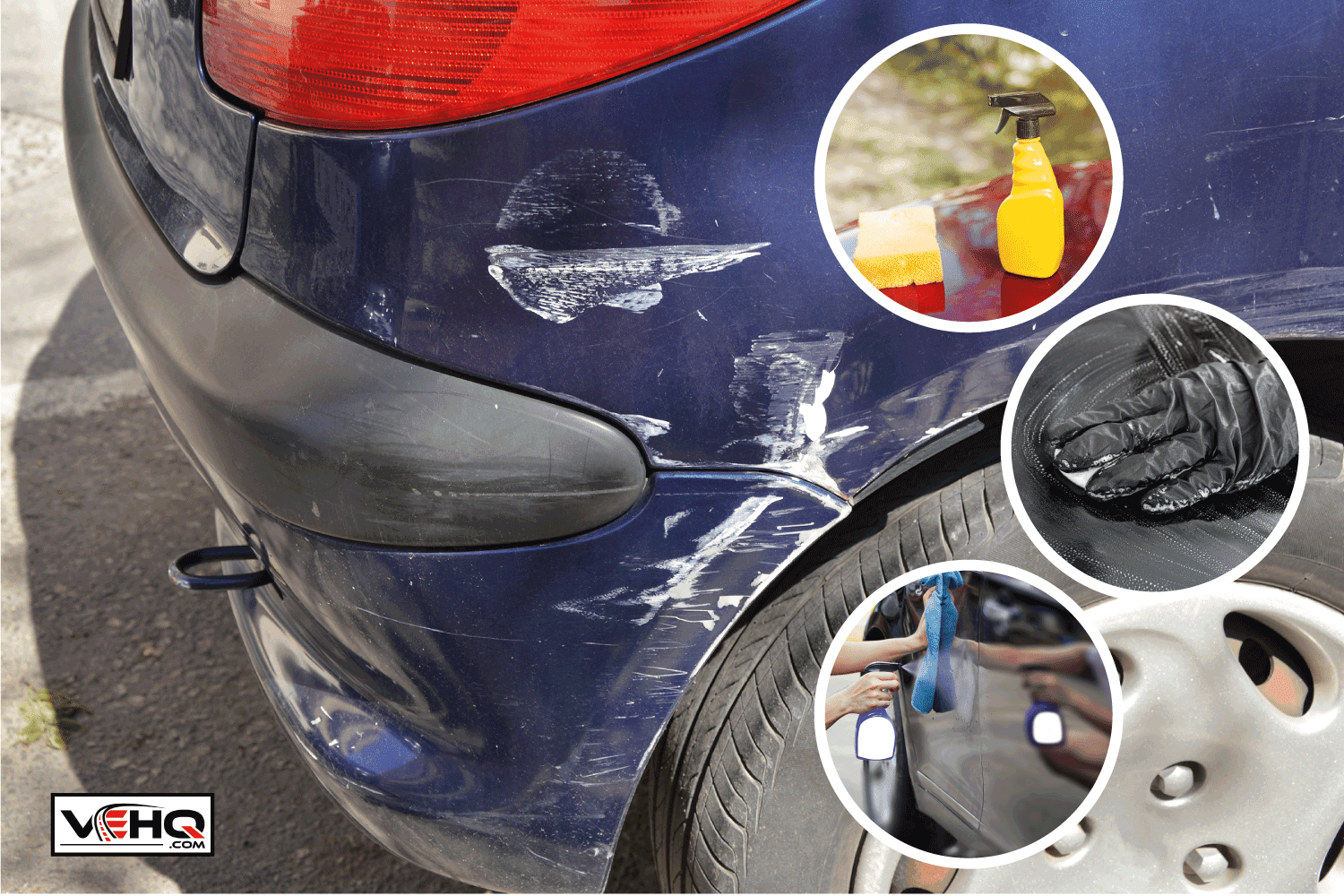
Correctly Identifying Scuff Marks
Before you remove the scuff marks, you have to inspect the damage. You have to be sure it's paint or residue transferred from another object. Otherwise, you might be confusing scratches with scuff marks.
Thus, you'd be using cleaners that won't fix anything. Scuff marks are superficial damage. They are easier to remove because it sits on top of the car's clear coat.
Some people refer to them as paint transfer. It's a general term that doesn't describe the situation entirely. Paint is one substance that can transfer to the car's surface.
Rubber from another vehicle's wheel and plastic from trash cans also transfer to any part of your car. While they're ugly to look at, they're not difficult to remove. In any case, let's go over the procedure.
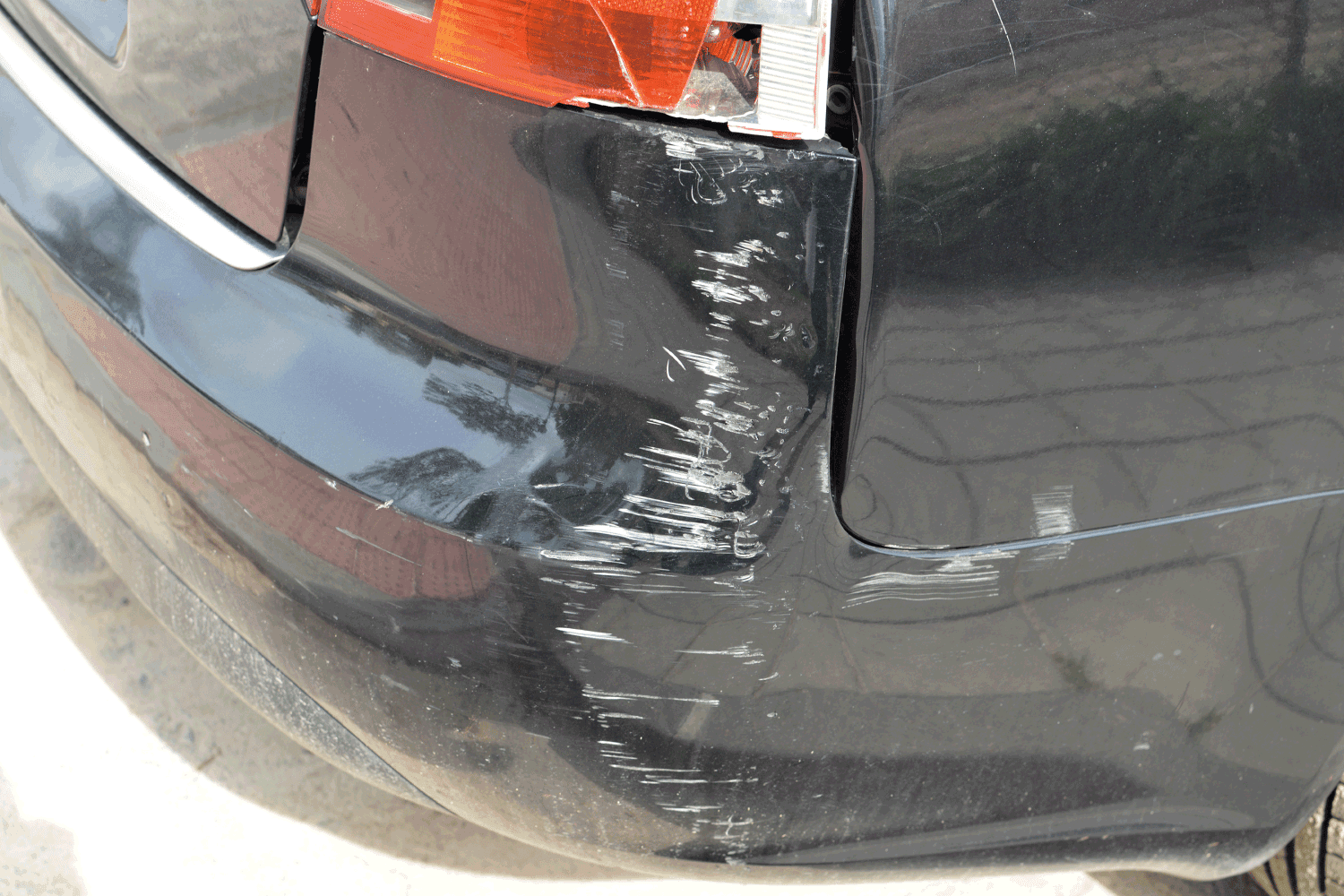
1. Prepare the Area By Cleaning It
It might seem tedious, but you'll have to start by cleaning the area. The residue or paint itself is not abrasive. But, the contaminants on your car's surface might be.
If you want to avoid scratches, prepping the area first is a precautious way to start. This way, when you wipe a microfiber cloth over the spot, it won't pick up abrasive contaminants.
2. Choose An Appropriate Cleaner For The Situation
Now it's time to think about the scuff mark. What is its source? For example, paint can transfer from a garage door. In that case, we'll need a paint remover.
Paint
However, we could also use tools that we already have in hand. One product that most households will have is WD-40. It works by saturating the paint.
Rubber, Plastic, and Paint
If you're having trouble removing the paint, you'll need a strong solvent. Unfortunately, you'll have to work with acetone. Otherwise, you can try working with toothpaste. It is mildly abrasive. Therefore, it may help you remove the scuff marks.
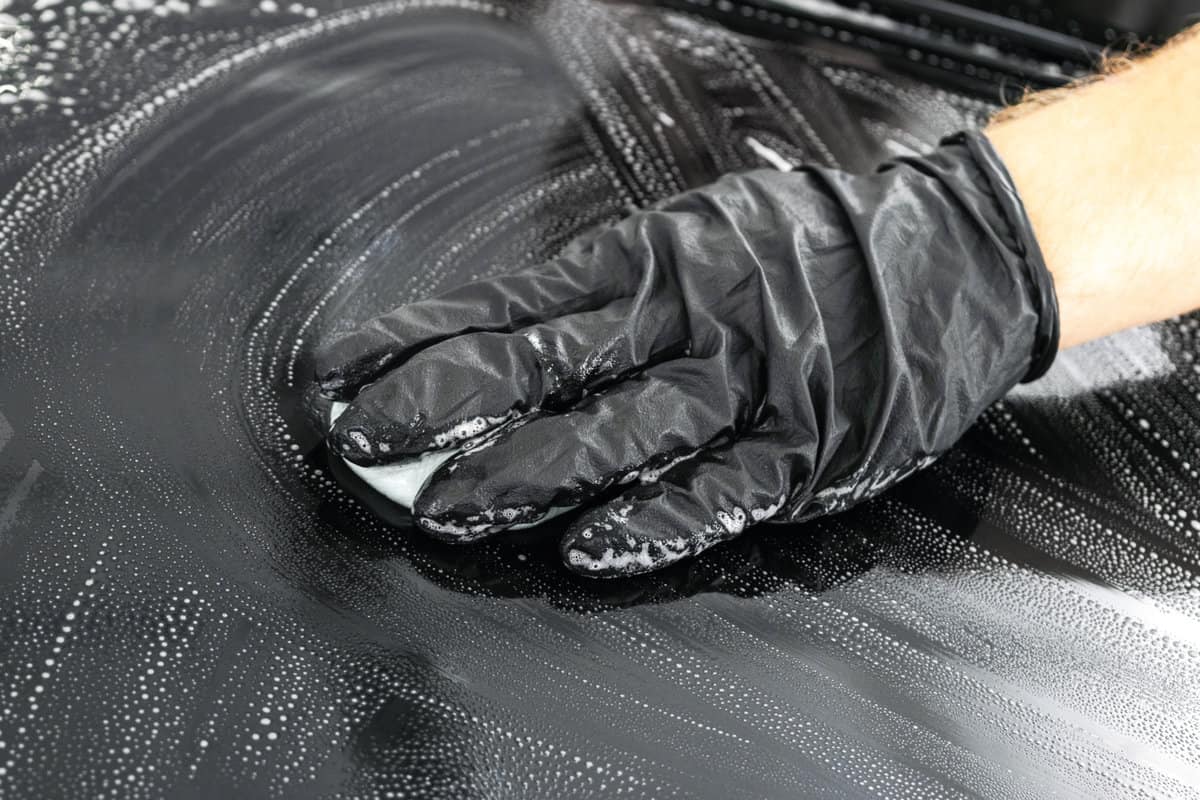
3. Apply the Cleaner to the Scuff Mark
If you decide to use WD-40, spray some of it onto the scuff mark liberally. You can wait a few minutes to let the paint soak the lubricant. Otherwise, wipe away with a sponge or a microfiber towel.
Those who choose to go with toothpaste or acetone will need to apply it to cloth instead. Never pour acetone directly onto your car. Otherwise, you might be stripping away more than the scuff marks.
It's a different case with toothpaste. You can spread a good amount over the affected area. Let it sit for 10-15 minutes. It allows the scuff marks to react to the toothpaste.
4. Wipe The Area Until The Blemishes Disappear
WD-40 as your cleaner is not going to be an easy process. You'll have to keep wiping away until the blemish disappears. Of course, the job is not over once you remove the marks.
Before you call it a day, give the area a quick cleaning. Take a clean microfiber towel and rinse the area with car soap. Then, wipe it dry. Hopefully, it's enough to remove everything.
Here's a YouTube video demonstrating the process in detail:
Acetone
The acetone method is simple. Take your acetone-soaked towel and wipe it over the area. It should come out effortlessly. You can also use nail polish remover. In any case, you'll also want to give the spot a quick wash afterward.
Polish and apply a wax finish to make it look good as new. Here's a YouTube video to give you an idea of what to do:
Toothpaste
After waiting 10-15 minutes, wipe the toothpaste off with a microfiber towel. Keep wiping away until you remove the toothpaste entirely. Hopefully, it manages to remove the residue.
Of course, finish the job by giving the spot a quick wash. If you'd like a visual demonstration of how it works, here's a YouTube video:
How Do You Remove Scratches From A Car?
If something rubs off on your car's surface, there's a good chance that it also left a scratch. Maybe it was hiding under the paint/residue transfer. So, you only noticed it when you removed it.
Unfortunately, the methods above won't remove scratches. You can try using toothpaste to fix the problem. However, it may only remove minor scratches. If it's deep, you'll need more firepower.
Using Abrasives
Deep scratches are never a good sight. Your work is not over if they appear after removing the scuff marks. There's no easy way to remove them.
Instead, you'll need the help of a compound. Some people may say you need to use polish. But, polish only works to remove minor scratches and add shine to a surface.
Therefore, removing scratches isn't its primary purpose. On the other hand, a compound is more abrasive than a polish. So, it's the perfect product to restore your car.
Applying Compound
Click here to see this car compound on Amazon.
Pour some compound product on an applicator pad. Then, begin working on the scratches. You want to move in circular motions. Use even pressure throughout the whole process.
Remove the compound before it dries. You can do this by wiping it off with a microfiber towel. If the scratch hasn't disappeared, continue compounding the scratches until it does.
Using Polish
Click here to see this car polish on Amazon.
Since the compound is abrasive, it will leave subtle imperfections. So, you want to use polish along with it. This way, you can create a smooth surface. In addition, it adds shine. Thus, it makes your car look as good as new.
You can follow the same steps above. So, wipe the area with scratches. Remove the polish before it dries with a microfiber towel. Repeat the process until you're satisfied with the results.
Applying Wax
Click here to see this wax on Amazon.
Of course, compound and polish strip away the wax and clear coating. So, you can't finish the job without applying more wax. Otherwise, you're leaving the surface with less protection than before.
If you didn't know, it's possible to strip away the car's clear coat completely. Therefore, it's essential to prevent that from happening.
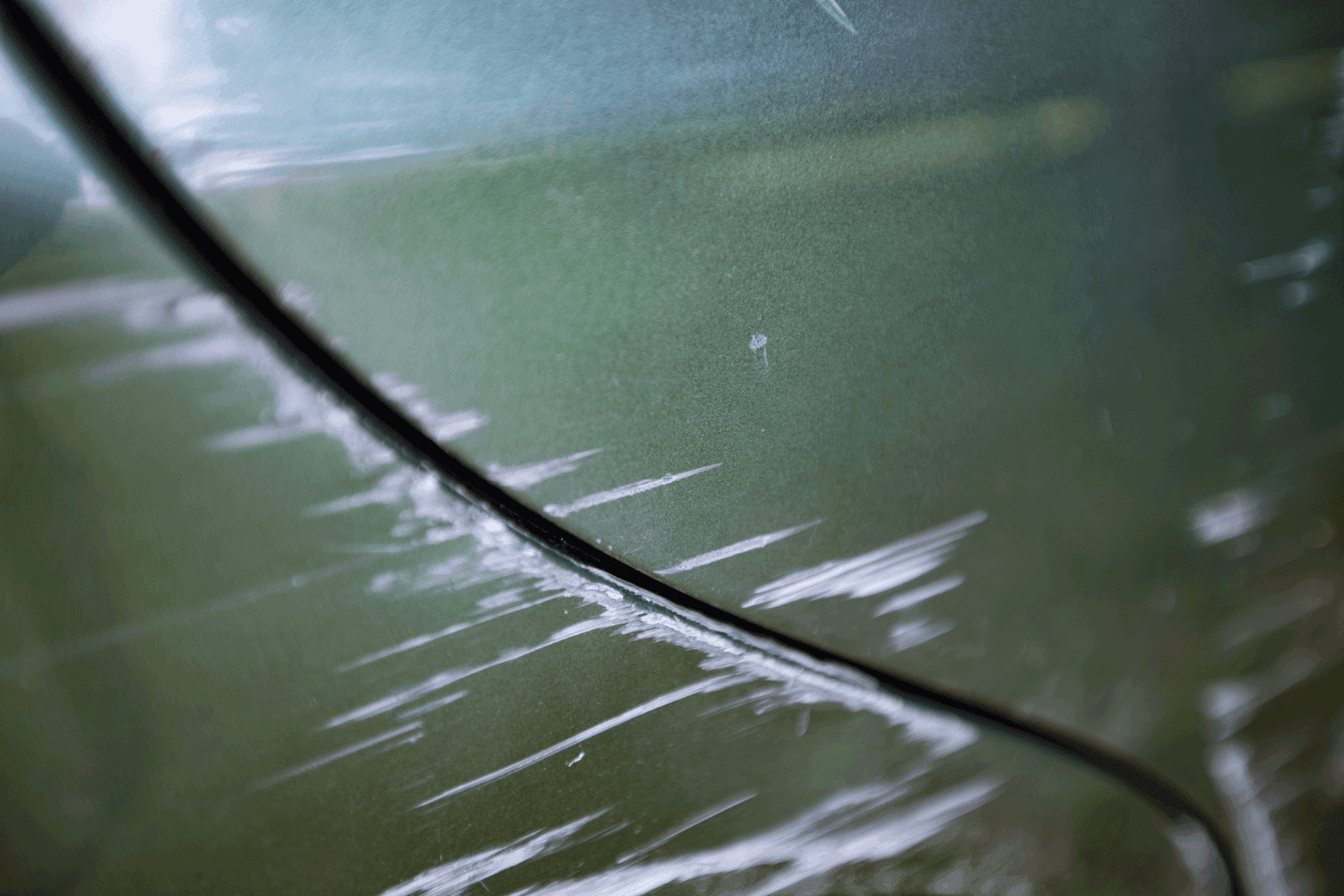
How Much Does It Cost To Repair Car Scratches?
Restoring your car to normal can be daunting for people who've never tried detailing. You're messing with chemicals and other substances that could harm the surface. In that case, it'd be best to visit a professional car detailing service.
Though, the amount they charge you depends on the extent of the damage. As mentioned, scuff marks are superficial damage. They're easy to remove because they sit on the clear coat.
If you visit a professional detailer, they can charge around $150 for removal. However, if it's deeper than a simple scuff mark, it can get expensive fast.
Deep car scratches can cost upwards of $2500. So, you might want to give it a try yourself before visiting a professional.
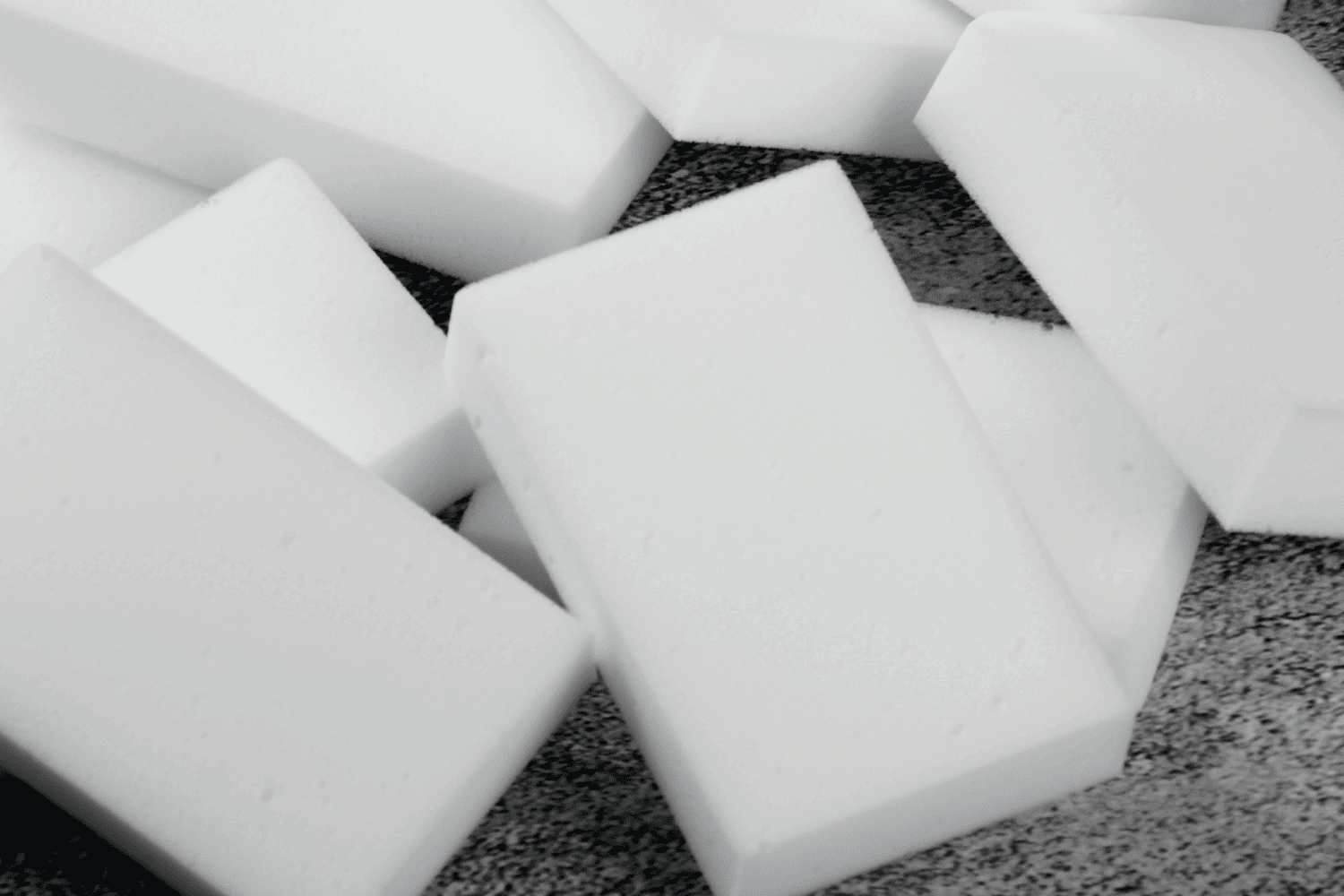
Does Magic Eraser Remove Scratches and Scuff Marks?
As we know, we need the help of abrasives to remove scratches and scuff marks from an area. Mr. Clean's magic eraser falls in that category. So, you might get the idea of using it.
Theoretically, it should work. However, it doesn't work out well. It's nearly impossible to apply even pressure with a magic eraser. So, you'd end up leaving more scratches behind.
They will remove scuff marks. They're one of the best in that area. However, they're mainly for use in other situations. Even Mr. Clean suggests not using it on a car's surface.
They recommend not using a magic eraser on surfaces with high gloss, polished, brushed, or vehicle body.
Does Polish Remove Scratches?
As mentioned, car polish is abrasive. Though, it raises the question, how powerful of an abrasive is it? Fortunately, it can only remove minor scratches. Scuff marks fall in that category. So, if you have polish on hand, you can use that to remove scuff marks.
Here's a YouTube video demonstrating how effective it can be:
Otherwise, you can use the other various methods above.
In Closing
Scuff marks are never a good sight to see for two reasons. First, it makes your car look worn out. Secondly, visiting a repair shop can get expensive. Fortunately, you can remove them yourself with the help of some household items. We hope you found the information helpful!
Before you go, do you need help removing other blemishes? If you need help cleaning algae, check out:
How To Remove Green Algae And Moss From Car Windows?
Do you have a mold problem? We can offer some help. To learn more, check out:



